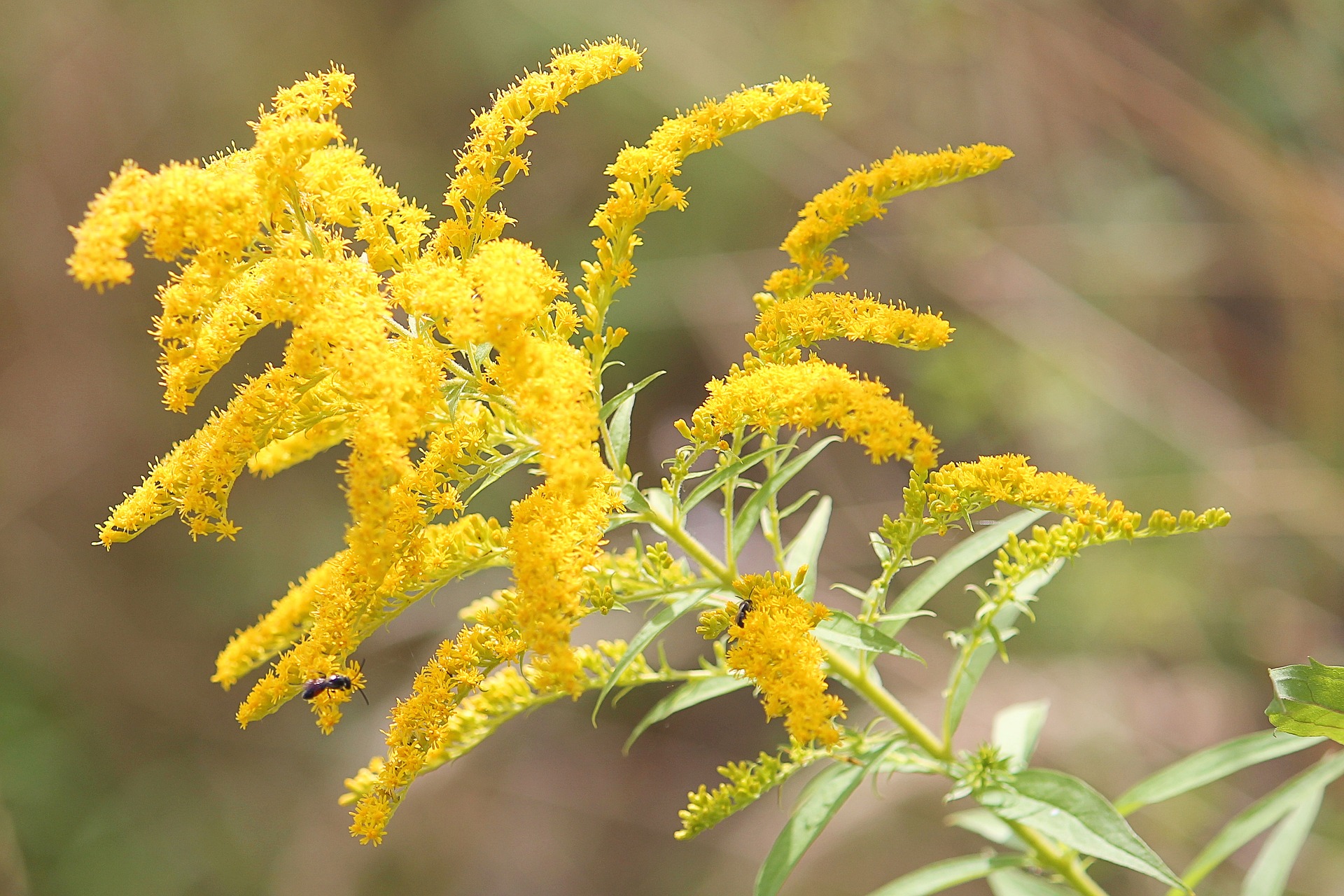As I’ve expressed in earlier columns this year, I find the issue of non-native plants to be more convoluted than it might appear at first glance.
I don’t believe in using chemicals to poison plants, even if they didn’t evolve here — this strategy is not only ineffective, but harmful all round. While I think native plants should be admired, protected and nurtured, I also know that not all invasive plants are non-native, and not all non-native plants are invasive.
Which brings us to today’s topic: goldenrod. Even if you aren’t familiar with this wildflower, you’ve probably seen it in local landscapes. It brightens up fields in the late summer with plumes of small clustered brilliant yellow flowers atop stems between 1 1/2 to 6 feet tall, depending on the species. It often fills fields, creating quite a spectacular sight when in bloom.
This native plant is in the Solidago genus, with over 100 species of goldenrods worldwide. I read that many are difficult to differentiate, so I haven’t yet tried to determine which ones grow around my home.
Goldenrod blooms at the same time as ragweed and other plants that pollinate via wind distribution, and so is sometimes unfairly blamed for hay fever. In fact, goldenrod’s sticky pollen, distributed by insects, does not cause annoying respiratory allergy symptoms.
Many insects pollinate this perennial plant, from bees and butterflies to the goldenrod beetle — a cute yellow beetle who loves the matching yellow flowers and additionally eats garden pests.
Not only does goldenrod not cause allergy symptoms, it has medicinal properties and may even ease seasonal allergies. Purportedly it clears the upper respiratory system of excess mucus both from allergies and from colds and flu.
Some herbal practitioners use goldenrod to help clear urinary tract infections, kidney stones and other urinary issues.
A poultice or oil of the herb has also been used to heal wounds.
Other than crushing the leaves and flowers for a poultice, the same parts of the plant can be used to make a tea or a tincture or infused into an oil. The flowering herb can be used fresh or dried for long storage.
Dye can be extracted easily from all parts of the plant, to color wool and cotton a variety of yellow and green hues.
But, let’s talk about the roots — let me tell you how much I dislike this particular plant’s root system. When weeding my garden beds I’ve pulled up goldenrod with roots 3-4 feet long.
I pull up goldenrod plants by bushels as they take over and dominate wherever they can. Although native, they can become pervasive, creating unhealthy monocultures.
I read that goldenrod roots excrete a chemical that inhibits the growth of other plants — I believe this based on my own observations. In areas where it has taken over, little else grows. After I rid an area of it, a variety of volunteer plants appear.
Don’t get me wrong, I’m not saying we should try to eradicate goldenrod (even if we could). I just find it interesting that this native plant shares characteristics with non-native invasives so hated by many.
While this pretty plant annoys me in my vegetable garden, I plan to harvest it to make teas, tinctures and dyes for my family when it blooms. With such a big population in my area, harvesting as much as I can will be a win-win — home herbal medicine and cutting down on a few goldenrod seeds.




